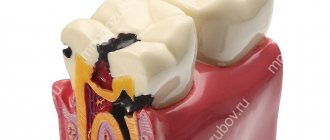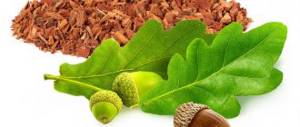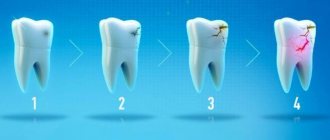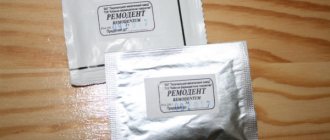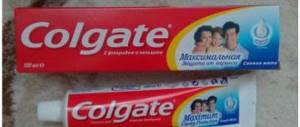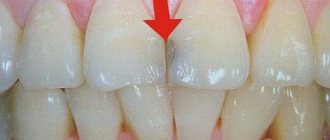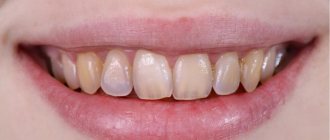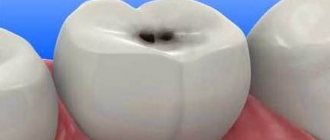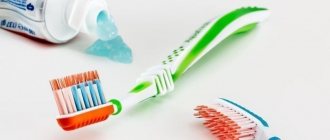There are so many ways that have not been invented to whiten teeth. They rub hydrogen peroxide and vegetable oils into the enamel, brush their teeth with soda or activated carbon, convincing themselves that beauty requires sacrifice. Everyone wants to get results quickly, without much effort and expense. But, as you know, the miser pays twice. Should you trust dubious folk recipes and risk your health? Today we will tell you everything about teeth whitening at home: what you can and cannot do to achieve the desired result.
Pros and cons of teeth whitening at home
Undoubtedly, home methods of teeth whitening have their advantages. Firstly, they are cheaper than similar services in a dental clinic. Affordable prices and a large selection of methods give everyone the opportunity to experiment with the color of their smile. Secondly, it's convenient. There is no need to make an appointment with a doctor or waste your precious time visiting the clinic: the entire procedure can be done independently, at a convenient time, without leaving home. This is where the advantages, perhaps, end.
A significant disadvantage of teeth whitening at home is its low efficiency. If professional whitening makes the enamel lighter by 10-12 tones, the maximum that folk remedies can help you with is that they will return your natural shade of enamel, which, unfortunately, is far from ideal white.
Another disadvantage is uncontrolled use. You cannot always adequately assess the state of your health. But many drugs have side effects: they destroy enamel, increase tooth sensitivity, irritate the mucous membranes and gums, cause an allergic reaction, and if accidentally swallowed, they poison the body. If you are afraid of such sad consequences, then first consult a dentist. As a specialist, he will tell you how to whiten your teeth at home in the safest and most effective way.
What are the dangers of whitening with turmeric?
It is important to remember that with prolonged and frequent use of a paste based on turmeric and coconut oil, the enamel may become thinner and tooth sensitivity may appear.
In order not to harm yourself, it is necessary to use natural teeth whitening remedies in moderation and carefully monitor the body’s reaction.
Turmeric is a caustic dye. If it gets on clothing, it may leave yellow marks. The toothbrush will also become stained and take on an obscene appearance.
The spice also has some contraindications:
- cannot be used for diseases of the gastrointestinal tract and gall bladder;
- Do not use while taking anti-inflammatory drugs;
- If you are pregnant or breastfeeding, you should consult a specialist;
- The seasoning should not be used frequently by men; it lowers testosterone levels.
Pharmacy preparations for teeth whitening
Currently, there are many products on sale for self-whitening teeth to suit every taste and budget. Before making such a purchase, inquire about the manufacturer and read reviews.
Whitening strips
The standard set includes 28 strips. They must be used every day for two weeks. Place the strip on your teeth and leave it on for 30 minutes. The hydrogen peroxide included in the composition will make your smile a couple of shades lighter.
Whitening Pencil
A very easy to use method. Has the same effect as strips. Squeeze the whitening gel out of the felt-tip pen, apply it to each tooth and leave for the time indicated in the instructions (from 1 to 10 minutes). At the end of the procedure, rinse your mouth with water.
Toothpastes with whitening effect
Toothpaste cannot whiten yellow teeth. It is designed to remove plaque. The abrasive substances and polishing components included in the composition effectively clean the enamel of pigment deposits. However, you cannot use this product constantly: after a week of use, you must take a break for at least two months.
Whitening toothbrush
If the packaging of a toothbrush is marked white or polish, this means that with the help of such a brush you can remove plaque from tea and coffee, as well as polish the enamel, making your teeth smoother and shinier. Of course, you should not expect any whitening effect, but with regular and high-quality cleaning you will return your teeth to their natural shade.
Research results
According to research, coconut oil is indeed beneficial for teeth and gums, but you need to use it correctly. First of all, it must be chosen correctly. The “usefulness” of the oil lies in its unique composition; it contains a lot of useful substances.
More recently, scientists have proven the fact that it can effectively whiten teeth and prevent caries. For these purposes, you must use bleached deodorized coconut oil.
This product is processed in a special way and after that it becomes suitable and safe for humans. It is very important to buy high-quality oil from trusted manufacturers.
Now you can find fakes - a mixture of oils that definitely do not differ in their quality.
If you choose refined bleached coconut oil, make sure that the packaging is marked “unmodified.” This means that the product does not undergo hydrogenation and has all the advantages of vegetable oils.
Of course, some of the beneficial substances are lost during refining and bleaching, but unprocessed oil can even harm the human body rather than benefit it.
Traditional methods of teeth whitening
According to dentists, you should not get carried away with folk remedies for teeth whitening, much less believe in their effectiveness. Here are the most common home methods for teeth whitening from would-be advisers on the Internet.
Teeth whitening with hydrogen peroxide
Hydrogen peroxide is the main component of most whitening systems, including professional ones. But this does not mean that by buying a bottle of peroxide at the pharmacy, you can whiten your teeth at home. The concentration of the substance in a regular vial is only 3 – 6%. This is not enough for effective whitening, but it is quite enough to cause a chemical burn to the mucous membrane.
Although professional whitening gels contain a higher concentration of peroxide - from 10 to 35%, they contain additional substances such as glycerin, fluoride and potassium to soften the aggressive effect on the enamel. Before the procedure, the doctor must apply a special liquid rubber dam to the gums, which reliably protects the mucous membrane from burns.
If you have caries, fillings or dentures, are pregnant or have gum disease, it is prohibited to use hydrogen peroxide for whitening procedures!
Teeth whitening with baking soda
“Baking soda will help make your teeth whiter” - this is exactly the advice that “well-wishers” very often give. Have you ever used baking soda to clean dishes when other cleaners didn't work? Indeed, this is a very strong abrasive substance that can remove any fumes and soot from the frying pan along with the Teflon coating. Do you still want to experiment with your teeth by brushing them with baking soda?! Baking soda does not have any whitening effect. All you will achieve with this home procedure is to remove plaque from your teeth and, if you try too hard, damage the enamel, leaving multiple cracks on it. So isn't it easier to brush your teeth with regular toothpaste? We guarantee that the effect will be the same and without harm to health.
Tea tree oil for teeth whitening
Let's say right away: you won't be able to whiten your teeth with oil. But it has a beneficial effect on the gums: it effectively strengthens, tones and relieves inflammation. In addition, tea tree oil has a good antimicrobial effect and permanently eliminates bad breath. Add a drop of oil to your toothpaste to freshen your breath and effectively remove plaque. Pregnant women, people with allergies and children under 16 years of age are not recommended to brush their teeth with tea tree paste.
Activated carbon whitening
Even in ancient times, people actively used wood ash to clean their teeth. It is a fact. And many contemporaries, remembering this, rushed to buy cheap activated carbon in pharmacies in the hope that they would finally make their smile dazzling white. But if this method of brushing teeth was relevant then, now people no longer need it. If only because now there are many more hygiene products that can be used to effectively and safely brush your teeth. Remember the harmful effects of baking soda on enamel? The same cracks appear from activated carbon.
Is it really that bad and there is no method that would be suitable for home teeth whitening? Of course there is!
Brushing your teeth with coconut oil
Another way to use coconut oil for your teeth is during regular brushing. This method is much more popular than rinsing, because you no longer need to accustom yourself to brushing your teeth. Simply add the herbal product to your toothpaste or apply pure coconut oil to your toothbrush and brush your teeth as usual for a couple of minutes. After this, rinse your mouth with water and brush your teeth a second time, but with regular toothpaste.
By the way!
For this procedure, it is better to have a separate toothbrush.
How to brush your teeth with coconut oil?
- Only before meals. If this is done afterward, the procedure may cause the destruction of tooth enamel due to the acid formed in the mouth.
- You can add turmeric powder to the oil to achieve the desired result. True, you should not get carried away with such an additive, so as not to provoke yellowing of the tooth enamel.
- And for the whitening effect, regular baking soda is suitable in a 1:1 ratio with an oil product. It must be said that this tandem should not be used more than 1-2 times a week.
Recipe for natural toothpaste with coconut oil
Basic remedy (0.5 cups) + baking soda (2-3 tablespoons) + peppermint ether (15-30 drops).
Melt the butter in a water bath or immerse the container with it in warm water and mix with the remaining ingredients. Pour into a separate container and use as regular toothpaste 1-2 times a week.
Professional home whitening
We are talking about whitening using individual trays and gel. This method is no worse than the laser method or photobleaching, but has fundamental differences:
- can be used independently after consulting a doctor
- gentle concentration of active substances allows you to gently whiten teeth
- The duration of the course depends on the desired result
An individual mouthguard developed in the laboratory using impressions of your teeth is quickly put on and fits tightly, allowing the gel to effectively act on each tooth from the outside and inside. This is the main advantage of individual kits over standard mouth guards from a pharmacy.
All you have to do is get your personal whitening gel trays from your dentist, fill the tray with the product at home, place it on your clean teeth, and wear it as directed, day or night, whichever is most convenient for you. After just a few procedures you will notice the result. Easy, simple and safe, even for sensitive enamel.
You can start home whitening after professional hygiene and fluoridation procedures. Lightening clean and strong teeth up to 10 shades at home is absolutely possible.
Contraindications
Despite the fact that turmeric is considered a safe spice, its use should be approached with caution:
- people suffering from allergies, as individual intolerance to the spice may occur;
- Pregnant and lactating women can use the spice only with the permission of the attending physician;
- It is undesirable to use this whitening method for people with gastric ulcers, urolithiasis and cholelithiasis;
- The seasoning should not be used before surgery (dental extraction or implantation), as the spice helps thin the blood.
If itching, redness, or a burning sensation occurs, you should stop using turmeric as a tooth enamel whitening agent.
According to reviews, using turmeric for teeth whitening allows you to achieve visible results after the first use, but in fact it can be achieved after 3-4 procedures.
Thanks to this method of enamel whitening, the health of the entire oral cavity will improve along with a dazzling smile.
Diet after whitening
In order to admire your snow-white smile for as long as possible after whitening, you need to adhere to a special “white” diet. Its main goal is to exclude from the diet those foods that contain food dyes. They can negatively affect the shade of the enamel.
So, what should you not eat the first two to three days after teeth whitening:
- strong tea, coffee
- red wine, berry fruit drinks
- colored carbonated drinks
- intensely colored vegetables (beets)
- chocolate, cocoa
- ketchup, sauces, mustard
It is advisable to give up such a bad habit as smoking. This will have a positive effect on the shade of your teeth and your overall health.
